Welcome visitor you can
login or register Phone Orders 888-212-8871
ELLAGIC DNA REPAIR
Ellagic acid has demonstrated DNA-protecting properties, including the ability to bind to toxins and neutralize them. Studies have also shown that ellagic acid may protect against chromosome damage and reduce the effects of chemically induced hepatic structural degeneration.
$39.95
CompareDescription
ELLAGIC ACID is a plant-derived polyphenol, possessing antioxidant, antiproliferative, and antiatherogenic properties. Whether this compound has estrogenic/antiestrogenic activity, however, remains largely unknown. To answer this question, we first investigated the ability of ellagic acid to influence the activity of the estrogen receptor subtypes ERalpha and ERbeta in HeLa cells. Cells co-transfected with an estrogen response element (ERE)-driven luciferase (Luc) reporter gene and an ERalpha- or ERbeta-expression vector were exposed to graded concentrations of ellagic acid. At low concentrations (10(-7) to 10(-9) M), this compound displayed a small but significant estrogenic activity via ERalpha, whereas it was a complete estrogen antagonist via ERbeta. Further evaluation revealed that ellagic acid was a potent antiestrogen in MCF-7 breast cancer-derived cells, increasing, like the pure estrogen antagonist ICI182780, IGFBP-3 levels. Moreover, ellagic acid induced nodule mineralization in an osteoblastic cell line (KS483), an effect that was abolished by the estrogen antagonist. Endometrium-derived epithelial cells (Ishikawa) showed no response to the natural compound by using a cell viability assay (MTT). These findings suggest that ellagic acid may be a natural selective estrogen receptor modulator (SERM).
Ellagic Abstracts
Antioxidant and apoptosis-inducing activities of ellagic acid.
Han DH, Lee MJ, Kim JH. Anticancer Res. 2006 Sep-Oct;26(5A):3601-6.
Department of Biochemistry, College of Dentistry, Kyung Hee University, Seoul 130-701, Korea.
BACKGROUND: Antioxidant, antiproliferative and apoptosis inducing activities of a natural polyphenolic compound, ellagic acid, were studied. MATERIALS AND METHODS: DPPH radical scavenging and lipid peroxidation inhibitory activities were observed. Activities of antioxidant enzymes, superoxide dismutase (SOD), catalase (CAT) and glutathione peroxidase (GPX) were measured in ellagic acid-treated V79-4 cells. For apoptotic inducing activity, human osteogenic sarcoma (HOS) cell proliferation, chromosomal DNA degradation and changes in apoptosis-related protein levels were measured. RESULTS: Ellagic acid showed high DPPH radical scavenging and lipid peroxidation inhibition activities. SOD, CAT and GPX activities were significantly increased in ellagic acid-treated V79-4 cells. Ellagic acid significantly reduced HOS cell proliferation, and induced apoptosis evidenced by chromosomal DNA degradation and apoptotic body appearance. Bax expression was induced and caspase-3 was activated by ellagic acid treatment. CONCLUSION: Ellagic acid exhibited both antioxidant activity in V79-4 cells and apoptosis-inducing activity in HOS cells through the up-regulation of Bax and activation of caspase-3. PMID: 17094489 [PubMed – indexed for MEDLINE]
Role of antioxidants in prophylaxis and therapy: A pharmaceutical perspective.
Ratnam DV, et. al. J Control Release. 2006 Jul 20;113(3):189-207. Epub 2006 May 13.
Department of Pharmaceutics, National Institute of Pharmaceutical Education and Research (NIPER), Phase-X, S.A.S. Nagar, Mohali, Punjab, India.
Antioxidants are emerging as prophylactic and therapeutic agents. These are the agents, which scavenge free radicals otherwise reactive oxygen species and prevent the damage caused by them. Free radicals have been associated with pathogenesis of various disorders like cancer, diabetes, cardiovascular diseases, autoimmune diseases, neurodegenerative disorders and are implicated in aging. Several antioxidants like SOD, CAT, epigallocatechin-3-O-gallate, lycopene, ellagic acid, coenzyme Q10, indole-3-carbinol, genistein, quercetin, vitamin C and vitamin E have been found to be pharmacologically active as prophylactic and therapeutic agents for above mentioned diseases. Antioxidants are part of diet but their bioavailability through dietary supplementation depends on several factors. This major drawback of dietary agents may be due to one or many of the several factors like poor solubility, inefficient permeability, instability due to storage of food, first pass effect and GI degradation. Conventional dosage forms may not result in efficient formulation owing to their poor biopharmaceutical properties. Principles of novel drug delivery systems need to be applied to significantly improve the performance of antioxidants. Novel drug delivery systems (NDDS) would also help in delivery of these antioxidants by oral route, as this route is of prime importance when antioxidants are intended for prophylactic purpose. Implication of NDDS for the delivery of antioxidants is largely governed by physicochemical characteristics, biopharmaceutical properties and pharmacokinetic parameters of the antioxidant to be formulated. Recently, chemical modifications, coupling agents, liposomes, microparticles, nanoparticles and gel-based systems have been explored for the delivery of these difficult to deliver molecules. Results from several studies conducted across the globe are positive and provided us with new anticipation for the improvement of human healthcare.
PMID: 16790290 [PubMed – in process]
-1-
Induction of cell death in Caco-2 human colon carcinoma cells by ellagic acid rich fractions from muscadine grapes (Vitis rotundifolia).
Mertens-Talcott SU, et. al. J Agric Food Chem. 2006 Jul 26;54(15):5336-43.
Department of Pharmaceutics, University of Florida, P. O. Box 110494, Gainesville, Florida 32610-0494, USA.
Possible anticancer mechanisms exerted by polyphenolic compounds contained in fruits and vegetables include antioxidant activity, the inhibition of proliferation, and the induction of apoptosis in cancer cells. This study examined the effects of four isolated polyphenolic extracts from red muscadine grapes (Vitis rotundifolia) on vital cell parameters and the induction of apoptosis in Caco-2 colon carcinoma cells. The magnitude of effects in cell culture was then correlated to polyphenolic composition and antioxidant capacity. Whereas anticancer effects of individual polyphenolic compounds have been demonstrated multiple times, information relating to anticancer effects of polyphenolic extracts is not available in abundance. All four extracts induced apoptosis, decreased cell number, and caused alterations in cell cycle kinetics in a concentration-dependent manner. The efficacy of the polyphenolics on vital cell parameters correlated well to the presence of ellagic acid glycosides and flavonoids and also to the antioxidant capacity. This study demonstrated the anticancer properties of ellagic acid rich extracts from red muscadine juice. PMID: 16848514 [PubMed – indexed for MEDLINE]
Current trends and perspectives in nutrition and cancer prevention.
Barta I, et. al. Neoplasma. 2006;53(1):19-25.
Center of Biomedical Sciences, Division of General Biology and Genetics, Charles University, 3rd Faculty of Medicine, Prague, Czech Republic.
iv*******@lf*.cz
There is an increasing evidence that dietary phytochemicals may play important roles as chemopreventive or chemotherapeutic agents in prevention of many diseases, including tumors. The purpose of this study was to examine antimutagenic effects and effect on the immune response of representative series of substances which commonly occur in human diet. Using the Ames bacterial mutagenicity test and in vivo chemiluminescence test, we investigated antigenotoxic and immunomodulatory effects of juices and vegetable homogenates (carrot + cauliflower, cauliflower, red cabbage, broccoli, onion, garlic) on the genotoxicity of AFB1 and pyrolysates of aminoacids. Using the Ames test and in vivo micronucleus, the chemiluminescence test, the blastic transformation test and the comet assay we examined antimutagenic effects of chemically identified chemoprotective substances in the pure form (resveratrol, diallylsulphide, phenethyl isothiocyanate, ellagic acid, epigallocatechin gallate, genistein and curcumin) on mutagenicity induced by three reference mutagens: aflatoxin B1 (AFB1), 2-amino-3-metylimidazo[4,5,-f] chinolin (IQ) and N-nitroso- N-metylurea (MNU) and effect of phytochemicals on the immunosuppression caused by these mutagens. All complete vegetable homogenates and substances of plant origin tested, showed a clear antimutagenic and immunomodulatory activities on mutagenicity and immunosuppression induced by reference mutagens. Only in the Ames test the effect of some phytochemicals against direct mutagen MNU was lower compared to indirect mutagens AFB1 and IQ. Similarly, resveratrol and epigallocatechin gallate had no inhibitory effect on mutagenicity MNU in the Ames test.
PMID: 16416008 [PubMed – indexed for MEDLINE]
-2-
Support ellagic acid therapy in patients with hormone refractory prostate cancer (HRPC) on standard chemotherapy using vinorelbine and estramustine phosphate.
Falsaperla M, et. al. Eur Urol. 2005 Apr;47(4):449-54; discussion 454-5. Epub 2005 Jan 19.
Operative Unit of Urology, Centro di Riferimento Oncologico della Basilicata, Rionero in Vulture, Potenza, Italy.
ma*****@ya***.it
BACKGROUND: Recent phase III studies in hormone refractory prostate cancer (HRPC) showed an improvement in terms of overall survival (OS), objective response (OR) and biochemical response (BR); however, chemotherapy is usually accompanied by negative side effects that determines poor quality of life (QoL) and only marginally improves individual clinical response (ICR) in terms of pain relief and performance status. Ellagic acid is a polyphenol that is found in many species of flowering plants. It is an antioxidant that determines apoptosis, down regulation of IGF-II, activates p21 (waf1/Cip1), mediates the cumulative effect on G1/S transition phase and prevents destruction of p-53 gene by cancer cells. ENDPOINTS: The aim of this study was to assess the effects of ellagic acid support therapy on toxicity, OR, ICR and BR in HRPC patients treated with estramustine phosphate and vinorelbine. MATERIALS AND METHODS: Patients with HRPC were randomly distributed in two study groups: a control group (group A) who underwent chemotherapy with vinorelbine and estramustine phosphate, and an experimental group (group B) where chemotherapy regimen was associated with ellagic acid. RESULTS: The mean number of chemotherapy cycles/patient was 4 (range 3-8 cycles) and 6.5 (range 5-11) in group A and B patients, respectively. A reduction in systemic toxicity, statistically significant for neutropenia, associated with better results in term of OR rate, ICR, and BR were observed in group B compared with group A. On the contrary no significant difference in OS and PFS was detected between groups. CONCLUSIONS: our study suggests that the use of ellagic acid as support therapy reduces chemotherapy induced toxicity, in particular neutropenia, in HRCP patients; however, further studies are required to confirm our results.PMID: 15774240 [PubMed – indexed for MEDLINE]
Evaluation of estrogenic/antiestrogenic activity of ellagic acid via the estrogen receptor subtypes ERalpha and ERbeta.
Papoutsi Z, et. al. J Agric Food Chem. 2005 Oct 5;53(20):7715-20.
Department of Biological Chemistry, Medical School, University of Athens Mikras Asias Str 75, Goudi, Athens 11527, Greece.
Only logged in customers who have purchased this product may leave a review.
Related Products
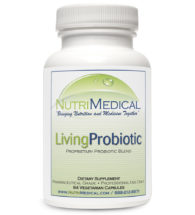
LivingProbiotic (84 caps)
$49.95
Select options
This product has multiple variants. The options may be chosen on the product page
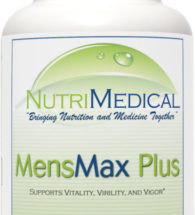
MensMAX Plus
$59.95
Select options
This product has multiple variants. The options may be chosen on the product page
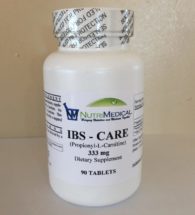
IBS-CARE
$39.95
Select options
This product has multiple variants. The options may be chosen on the product page
© 2022 Nutrimedical.com
Privacy Policy | RETURN POLICY | Terms of Use | Contact Us *These statements have not been evaluated by the Food and Drug Administration. This product is not intended to diagnose, treat, cure, or prevent any disease. *Within the contiguous U.S. FREE standard shipping is available for orders totaling $99 or more. Outside the contiguous U.S. Standard Shipping to Alaska, Hawaii, Puerto Rico, U.S. Territories and Canada is calculated at check out. International: We ship to 160+ countries!
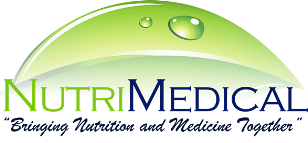
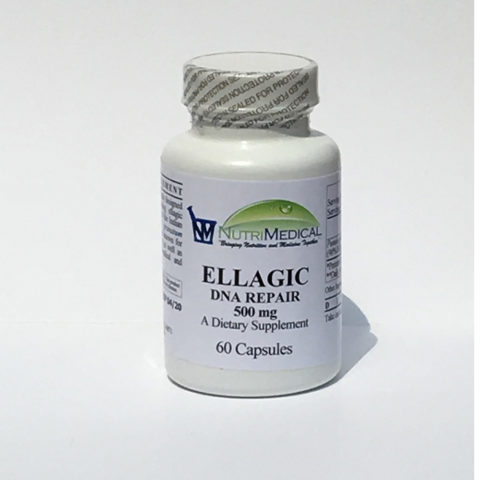
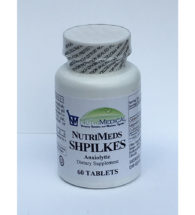
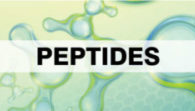
Reviews
There are no reviews yet.